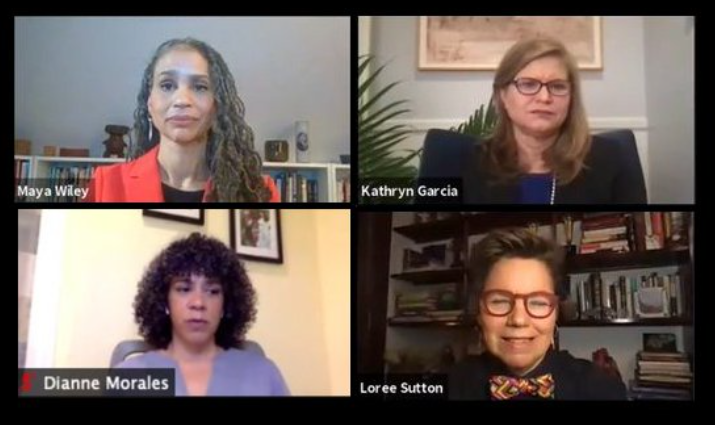The COVID-19 Vaccine
Words by Fabliha Hussain
Cover Photo courtesty of Ivan Diaz
Since the COVID-19 pandemic hit in 2020, everyone had been wondering when a vaccine would be created. Although it took a while, vaccines have been rolling out. In fact, three different companies have had their vaccines approved by the FDA; Moderna, Pfizer, and Johnson & Johnson. Johnson & Johnson was recently approved, but people have been getting the Moderna or Pfizer vaccines for a few months now. The Pfizer vaccine was approved on December 11, 2020 and the Moderna vaccine was approved just one week later. The Johnson & Johnson vaccine was approved on February 27, 2021.
The Pfizer vaccine reports a 95% efficacy rate in those who previously have not been infected with COVID-19. It has also been shown to work against variants such as the one discovered in Great Britain. This vaccine must be stored in ultra-cold units at -94 degrees Fahrenheit. Anyone who is 16 and older can get the Pfizer vaccine as it has not yet been tested in those 15 and younger. The regimen requires two shots that are taken at least 21 days apart. What is most significant about this vaccine is that it is a messenger RNA (mRNA) vaccine. Most vaccines are commonly known to put a weakened part of the disease into the body so that the body can then build immunity to it. An mRNA vaccine, however, delivers a tiny piece of the genetic code of the COVID-19 virus. The host cells in the body then receive instructions to make copies of spike proteins that penetrate and infect host cells. In turn, an immune response is activated such that antibodies and memory cells are produced which can recognize and respond to the real virus. This exciting new technology can help people stay protected without risking their health. Unfortunately, the vaccine also comes with common side effects. These side effects can include, but are not limited to, chills, headaches, tiredness, etc. Normally, side effects subside within 72 hours. If they do not abate, it is recommended that a health care professional be contacted. On another note, mRNA vaccines are also shown to result in anaphylaxis, an allergic reaction. To address this risk, those who receive the vaccine are required to stay for at least 15 minutes afterwards for monitoring.
The Moderna vaccine has a 94.1% efficacy rate, only slightly lower than that of Pfizer’s. The Moderna vaccine is extremely similar to the Pfizer vaccine in that it is also an mRNA vaccine. It can, however, be stored at normal freezer temperatures for up to 30 days unlike the Pfizer vaccine which needs extremely low temperatures. Moreover, only adults 18 and older should receive the Moderna vaccine. The regimen requires two shots as well, but these shots should be taken at least 28 days apart. The other characteristics of the Moderna vaccine are incredibly similar to the Pfizer vaccine, including side effects and resistance to variants.
The Johnson & Johnson vaccine has a 72% efficacy rate and is a single shot regimen. Those 18 and older can use the Johnson & Johnson vaccine safely. This vaccine is also easier to store at refrigerator temperatures than the Pfizer or Moderna vaccines. Although those who are vaccinated with the Johnson & Johnson vaccine experience milder side effects, they still can experience some. No allergic reactions to the shot have been observed either. The Johnson & Johnson vaccine is not a mRNA vaccine, rather, it is a carrier vaccine, meaning that scientists created a harmless adenovirus which carries the genetic code on the spike proteins to the cells. Once the code enters the cells, the cells can train the body’s immune system to create antibodies and memory cells that protect against the actual infection. It also protects against the virus variants.
COVID-19 vaccine. Courtesy of Hakan Nural.
Along with these three vaccines that are available and circulating in the United States, there are two other vaccines in the works. The Oxford-AstraZeneca vaccine is circulating in the United Kingdom. It is most similar to the Johnson & Johnson vaccine. Novavax is still undergoing clinical trials, but it is a different type of vaccine altogether with an 89% efficacy rate. This vaccine contains the spike protein of the coronavirus itself but in the form of a nanoparticle, so that the disease cannot occur in the body. This nanoparticle stimulates the immune system to produce antibodies and immune responses.
With all these vaccines available, it becomes important to make sure to get vaccinated if one is eligible. That is, however, easier said than done. Getting an appointment can be next to impossible. There are resources out there that can help people find vaccine appointments. Some resources include:
COVID-19 Vaccine Hubs: https://vax4nyc.nyc.gov/patient/s/
TurboVax: https://www.turbovax.info/
NYC Vaccine List: https://nycvaccinelist.com/
Vaccine Finder: https://vaccinefinder.nyc.gov/
Make sure to check often and secure an appointment! Wear masks, stay indoors, and be safe!





